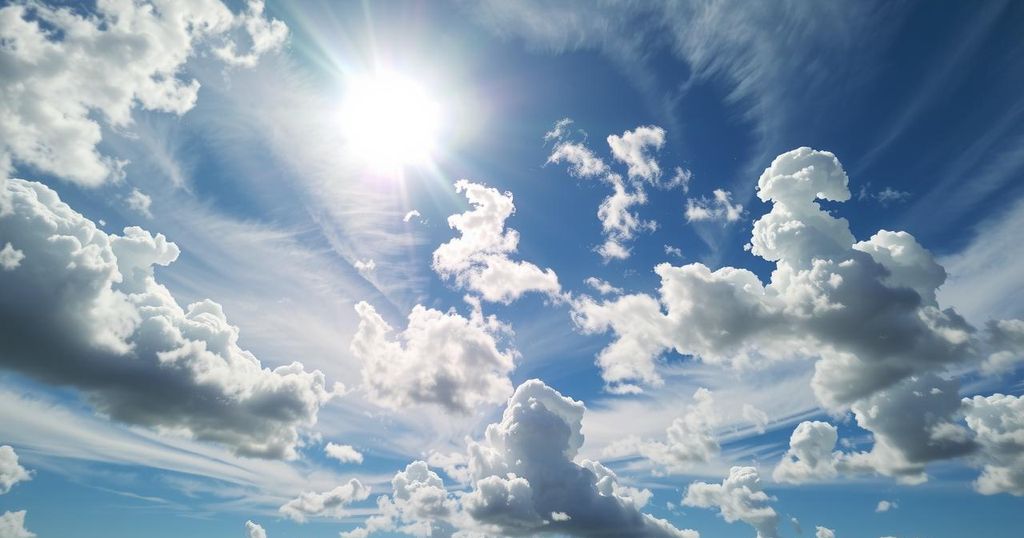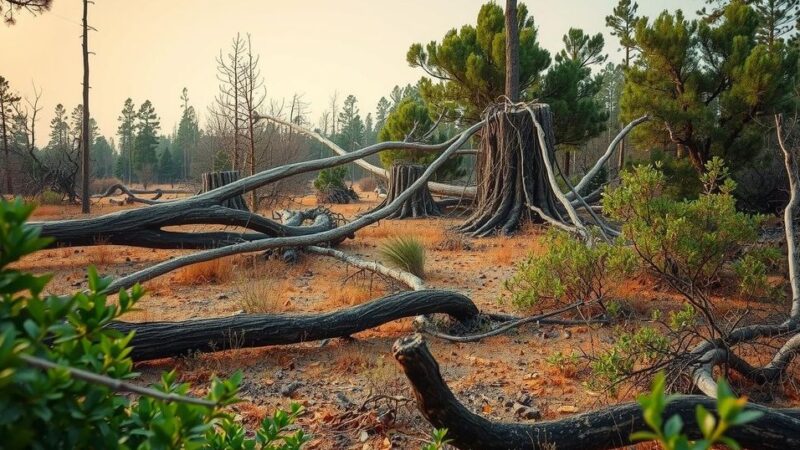The onset of 2025 has brought intense weather phenomena in the U.S., including powerful winds and severe winter conditions. Recent scientific advancements affirm that climate change has significantly influenced weather events, with 2024 noted as the hottest year on record. While not all weather variations stem directly from climate change, there exists a notable link, prompting a reevaluation of how global warming impacts daily meteorological conditions.
The year 2025 commenced with a series of extreme weather phenomena affecting various parts of the United States. Southern California faced fierce winds, reaching speeds of 100 mph, which contributed to record-setting wildfires. Simultaneously, severe winter storms brought unusually cold temperatures and snowfall to the Mid-Atlantic and southern regions. This tumultuous weather is juxtaposed against the recent scientific assertion that 2024 was the hottest year on record, primarily attributed to human-induced climate change.
Traditionally, climate scientists maintained that individual weather events could not be directly linked to climate change. However, recent advancements in meteorological science have enabled researchers to assess and quantify the influence of climate change on extreme weather occurrences such as heat waves, hurricanes, and wildfires. Justin Mankin, a climate scientist from Dartmouth College, emphasizes the unprecedented nature of current weather possibilities due to these climatic shifts.
The distinction between climate and weather is fundamental to understanding these phenomena. Danielle Touma of the University of Texas, Austin, aptly illustrates this concept, stating that climate represents the long-term patterns—such as the contents of one’s wardrobe—while daily weather is akin to specific clothing choices influenced by immediate conditions. Statistical definitions mark the climate of an area as the 30-year average, indicating that while unusual weather events are noteworthy, they primarily contribute to the broader climatic picture rather than defining it.
Human-driven climate change has resulted in a rise in global temperatures of approximately 1.3 degrees Celsius since the mid-19th century, correlating with the exploitation of fossil fuels. Although this gradual increase may not always yield conspicuous shifts in daily weather, it subtly affects meteorological conditions across the globe. Deepti Singh, from Washington State University, points out that daily experiences of weather reflect a transformed environment influenced by these climatic changes.
Notably, certain regions are experiencing a significant decrease in freezing days; for instance, states such as Michigan and Ohio now endure more than a week less of freezing temperatures than they did in a climate-unaffected scenario. Concurrently, the frequency of heat waves has more than tripled since the 1960s. Such climatic alterations extend beyond mere temperature changes, leading to unprecedented atmospheric phenomena that were not prevalent in the past.
The 2021 heat wave in the Pacific Northwest serves as a poignant example of how climate change has intensified specific weather patterns while simultaneously establishing novel meteorological conditions. Alex Hall from UCLA conveys the gravity of these changes, stating that “we’ve kind of put the climate on steroids.” This illustrates how climate change serves as a catalyst for extreme weather events that were previously outside historical norms.
To substantiate these claims, scientists have developed methods of “detection” and “attribution” that enable them to isolate the impacts of human activity on weather patterns. By employing sophisticated climate models to simulate environment conditions devoid of fossil fuel combustion, researchers compare these scenarios with current observations to determine the effect of climate change on weather events. For instance, it was revealed that Hurricane Helene’s rainfall was intensified by at least 10% due to climate change, demonstrating the profound implications of human activities on meteorological events.
This growing understanding of the interplay between climate change and weather highlights the need for continued research and awareness regarding the consequences of human actions on the environment. The evidence is putting pressure on policymakers to address these critical challenges responsibly and decisively.
Extreme weather events have become increasingly frequent and severe, sparking concerns about their relationship with climate change. This understanding has evolved considerably over the years, as advancements in climatology have enabled scientists to examine the nuances of how human activity influences weather patterns. As global temperatures continue to rise due to greenhouse gas emissions, the impact of these changes on daily weather is an area of keen interest for researchers worldwide, emphasizing the need for innovative approaches to assess these phenomena.
The discussion surrounding the relationship between climate change and weather events underscores a significant evolution in scientific understanding. Although not every fluctuation in weather can be attributed to climate change, there is a growing body of evidence demonstrating its influence on extreme weather occurrences. This interplay highlights the ongoing necessity for diligent research and proactive measures to mitigate the impact of human-induced changes on the environment.
Original Source: www.southcarolinapublicradio.org






